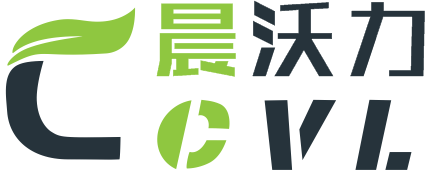- Have any questions?
- info@cvlchem.com
Process Technology for H2S / CS2 Products
1. Carbon Disulfide Products
CAS No:75-15-0, Molecular structure: , Molecular formula:CS2,Molecular weight: 76.14,Property: Colorless to yellowish liquid.
, Molecular formula:CS2,Molecular weight: 76.14,Property: Colorless to yellowish liquid.
2. Process Route
On the basis of the mature methane sulfur method production process in China, a new process of "high temperature carbon capture + high temperature heat exchange + one column rectification" is firstly applied, and the separation procedure in this process is shorter, lower energy consumption, more stable product quality, hydrogen sulfide purity is up to more than 98%, and carbon disulfide reaches the national standard for superior products. The safety performance of the recycled liquid sulfur process is greatly improved. Compared with Ruixing technology in Liaoyang and Baijin technology in Shanghai, our technology has obvious advantages, not only the production cost is greatly reduced and the product quality is more stable, but also to solve a series of safety and environmental problems caused by recycling sulfur entraining with carbon disulfide.
3. Process Principle
Non catalytic synthesis of carbon disulfide and hydrogen sulfide process at high temperature using natural gas and liquid sulfur as raw materials.
Principle of its main reaction:

Liquid sulfur generally exists as S8, with increasing temperature, forming a S6, S4, S2 mixed system, S2 exists completely in a gaseous state, and the process is endothermic.
② CH4+2S2(g) → CS2+2H2S
This reaction is an exothermic process.
The main side reaction is the high temperature cleavage of methane or C2 and above hydrocarbons to form carbon and release hydrogen, in order to reduce the side reaction, sulfur excesses in the reaction process, the excess ratio is generally 10-15%.
4. Process Characteristics
①Separation of carbon disulfide products using medium pressure single column rectification technology, one single column solves product fine desulfurization and hydrogen sulfide separation, not only the recovery rate of carbon disulfide is increased by 2% compared to the low-pressure column (calculated as 50000 tons per year of carbon disulfide, 1000 tons more product can be recovered annually), at the same time the product's superior grade rate reaches 100%. Operation of a single column, saving investment in separation equipment by 30%, improves operational stability, and significantly reduces floor space.
②Excess sulfur in carbon disulfide applies the high temperature and rapid cooling recovery technology, not only solves the problem of recovering the sulfur band carbon disulfide easy to fire, while the problem of carbon blockage easily with the long cycle operation of the sulfur condenser is fundamentally solved.
③A maximum of 50000 t/year can be achieved with a single set of plant, and further savings can also be made in the investment.
④The heating furnace uses air preheating technology, which can save 10-15% of the fuel gas.The technology has successfully applied with an annual 70000 tons of carbon disulfide plant start-up in 2019 in China, and has been continuously and stably producing for 3 years, reaching the best level in the country for various indicators.
5. Capacity,Application and Market
The proposed capacity is 10000-50000t/a, and according to the carbon disulfide or hydrogen sulfide requirement, we can provide complete process design package.
Main application: It is mainly used for manufacturing viscose fiber, cellophane, insecticide, solvent of sulfur chloride, xanthate, anti-corrosion agent, aviation lubricant, bactericide intermediate, and rubber vulcanization accelerator. It is also a solvent for inspection and analysis. It is also used to extract grease. It is also the raw material for the production of rayon, cellophane, carbon tetrachloride, pesticide fungicides, rubber additives; Carbon disulfide is an excellent solvent; it can be used as wool degreaser, clothes stain remover, metal flotation agent, paint and varnish remover, aviation kerosene additive, etc.
Downstream products: sodium thiocyanate, calcium thiocyanate, ammonium thiocyanate, potassium thiocyanate, insoluble sulfur, carbon tetrachloride, 4-bromophenol, Sodium thiomethoxide, N-Methyl-1-(methylthio)-2-nitroethylen-1-amine, cysteamine hydrochloride, Dimethyldithioester, 5-Mercapto-1-methyltetrazole, 40% methidathion emulsifiable concentrates, Bismerthiazol W.P.(20%), and Isoprothiolane.
Market size: The global total production capacity is about 1.28 million tons in 2020 and 1.36 million tons in 2021.
